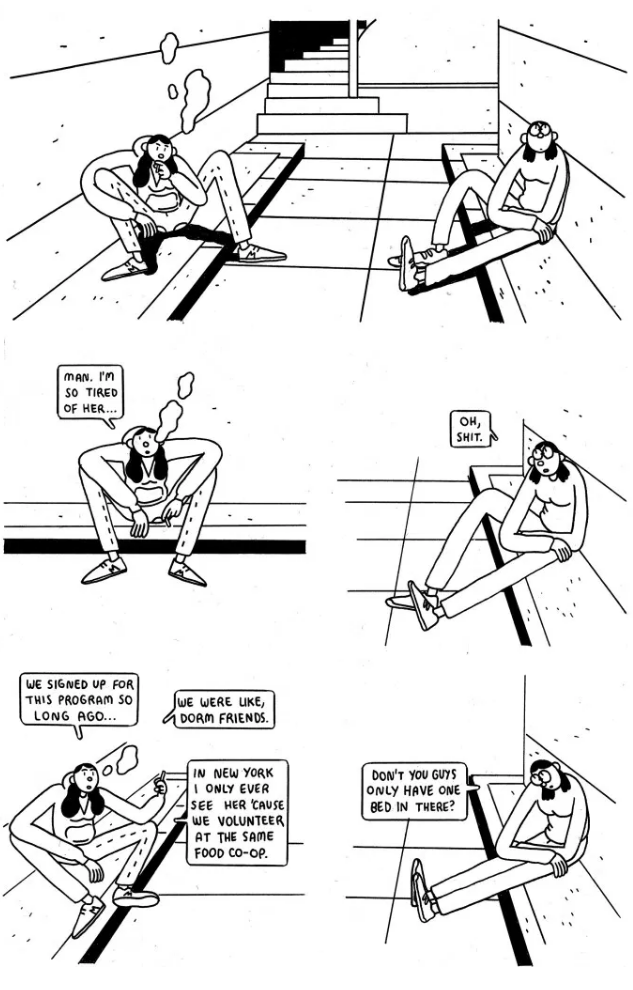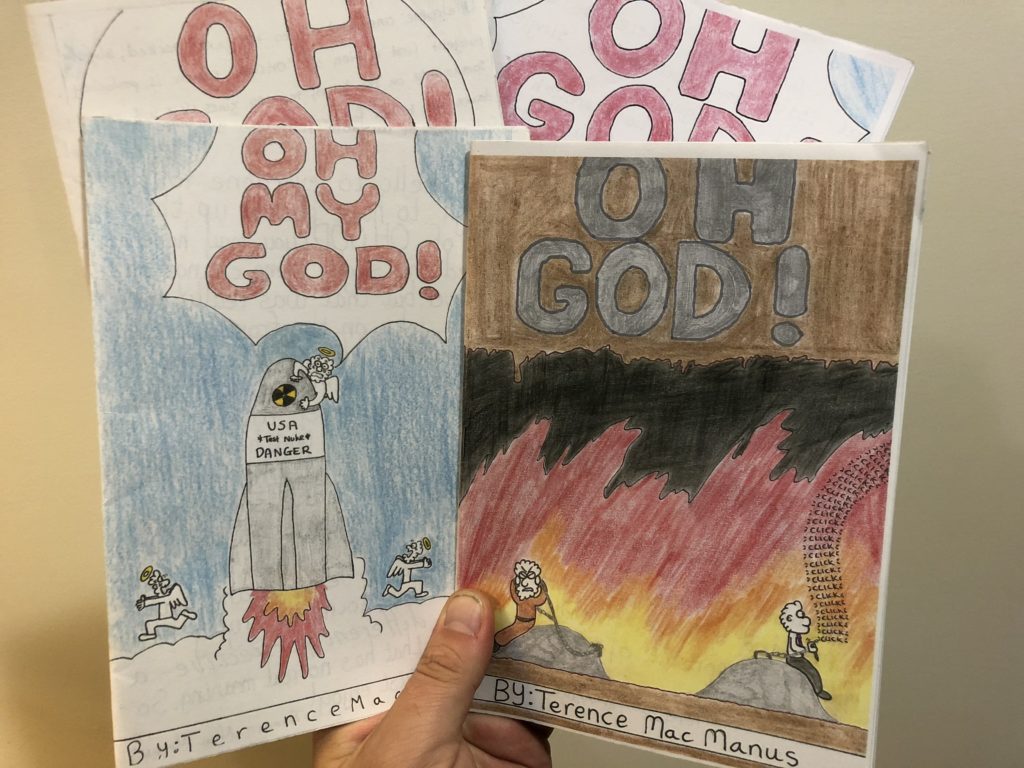Last week when we looked at the Eisner nominations on the podcast and the blog, we noted that one of the webcomics presented was very different in both style and content: The Contradictions by Sophie Yanow.

In the blog last week, we said Yanow’s comic was more reminiscent of an “e-Zine” than a ‘traditional’ webcomic. But what on earth does that even mean?! Today, dear Digital Strippers, we’re going back up the branches of the webcomic family tree and looking at the wild and wonderful world… of Zines.
Long ago, back in the before-fore times when the internet didn’t exist, the smell of photocopier toner was king. Independent artists wanting to get their work into the world without the gatekeeping of traditional media outlets such as newspapers, publishers or magazines turned to the next best thing (since the woodcut) — making their own mini-magazines with scissors, glue, gumption, and a lot of that toner. The resulting creations could number a production run in the thousands, hundreds, dozens (or even single-product publications), often physically handed out by the creator or dropped off at a variety of sympathetic businesses like galleries or cafes.
The ‘underground’ nature of this incredibly Indie form of self-publishing naturally lends itself well to the outrageous, the bizarre, and the otherwise-unpublishable; the counter-culture. Zines can cross a wide variety of genres ranging from political tracts, poetry, short fiction, artwork, reviews and yes — even comics.

If the idea of an independent artist bucking the system to just put the art (or comics) they want to make into the world sounds familiar that’s because, I suppose, it is. The ‘zine really is a precursor to the blog, the deviant art page, and the webcomic in this regard. Not only in the literal sense (although I still do have a couple of zines here on the bookshelf whose creators went on to turn into webcomics), but thematically — when all you had was an idea and a few dollars to feed into the local library’s photocopier, zines were the way to get your thoughts and your voice out there into the big wide world.
Bringing the subject back around, Yanow’s Eisner-nominated strip The Contradictions bears a lot of resemblance to the types of storytelling and art often found in zines both historically and today — for as the e-reader didn’t eliminate the book from history neither has the internet erased zines and zine culture.
Yanow’s simple black-and-white art style with clean fill and simple affect perfectly homages the technical limitations faced by zinesters at a photocopier, where shading, colour/greyscale and fine detail rarely survive the reproduction cycle. The artwork also screams classic counter-culture, as does the strong social left and anarchistic themes explored by the narrative. Even her word balloons eschew the traditional circle-style speech bubble for a closely-cropped square: each visual element of the comic tells you in no uncertain terms what kind of experience you’re in for.
The presentation of The Contradictions as a webcomic bucks convention, too — Yanow’s decision to put the comic up as an infinite scroll beginning from the first ‘page’ each time you visit the site (therefore requiring the reader to scroll past the entirety of the comic to access the latest update) would normally be considered anathema in webcomic-reading circles.
It’s not difficult to see, then, why Yanow’s webcomic is present in the Eisner nomination list for 2019 — not only does it present an excellent example of it’s genre, this e-zine also respects and celebrates the proud tradition of creativity which ultimately led to the webcomics we all read and love today. A worthy addition to the Eisner’s lineup.
Have you come across the zine culture of your city yet? The (usually) tight geographical distribution of zines and strong networks of creators make the kinds of content on offer markedly different in some places. In Melbourne, Australia, where I grew up, zine culture was strong and proud, with a retail zine storefront in the very heart of the CBD, right underneath our most popular railway station. If you love art, comics, and writing, then it’s always worth checking your local zine scene for your next great, and unique, read — and makes a fun treasure hunt when you’re playing tourist as well!
If you’ve got a great e-zine recommendation (or maybe you’ve photos of your own past/current analogue zines to show us as well?) hit us up in the comments below, or on Facebook and Twitter, and until next time always remember: don’t eat the clickbait!

Thank you for sharing.Good luck
Game Lover – https://games.lol/